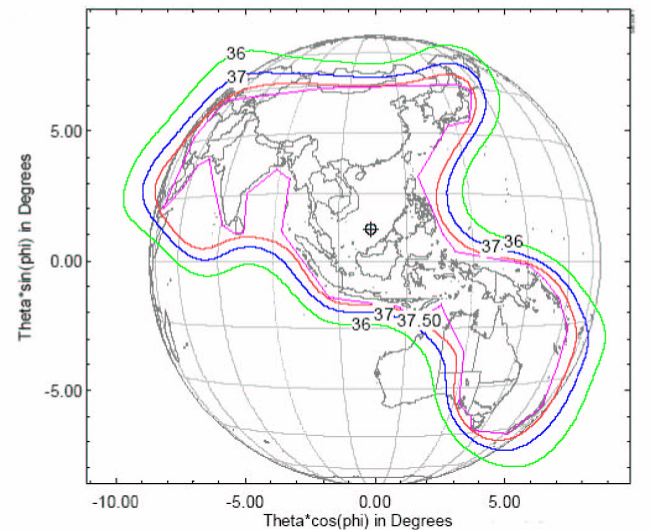COSPAR ID 2009-046A Reference system Geocentric Launch date 31 August 2009 Bus Spacebus Mission type Communications satellite | SATCAT no. 35812 Regime Geostationary | |
 | ||
Operator IndosatGlobal Mediacom Mission duration 15 years (planned)10.5 years (expected) Launch site Xichang Satellite Launch Center Similar Telkom 1, AsiaSat 5, Thaicom 5, Apstar VI, Apstar‑7 | ||
Palapa-D, also known as Palapa D1, is an Indonesian geostationary communications satellite which is operated by Indosat and MNC Media. It was built by Thales Alenia Space, based on the Spacebus-4000B3 satellite bus, and carries thirty five G/H band and five J band transponders (US IEEE C and Ku bands respectively). It is positioned in geostationary orbit at a longitude of 113° East, where it will replace the Palapa C2 satellite.
Contents
Indosat ordered Palapa-D from Thales Alenia Space in 2007. The satellite was built without using American components, and was therefore not restricted by US International Traffic in Arms Regulations, which allowed the China Great Wall Industry Corporation to be selected as a launch service provider.
Launch
A Long March 3B rocket, flying from Launch Area 2 at the Xichang Satellite Launch Centre was used to launch Palapa-D. A problem with the third stage of its carrier rocket left it in an incorrect orbit, which was subsequently corrected using the spacecraft's onboard propulsion system.
After launch, Palapa-D was to have separated from its carrier rocket into a geosynchronous transfer orbit, however one of its two identical upper-stage engines failed to deliver the necessary thrust, resulting in it reaching a lower orbit than planned. The 400 newton apogee motor of the satellite was subsequently used, in a non-nominally mode to raise it into geostationary orbit.
Recovery and operations
On 3 September, the satellite's orbit was adjusted, placing it into a geostationary transfer orbit. It reached geostationary orbit on 9 September. It underwent on-orbit testing, and arrived at its orbital slot of 113° East in mid-September. After completing its testing, it is now being used to provide communications to Asia and Australia.
Palapa-D was built with a design life of fifteen years, but due to the expenditure of fuel during maneuvers to correct its orbit, it is expected to have enough fuel for about ten years of operations, according to Reynald Seznec, President of Thales Alenia Space.
